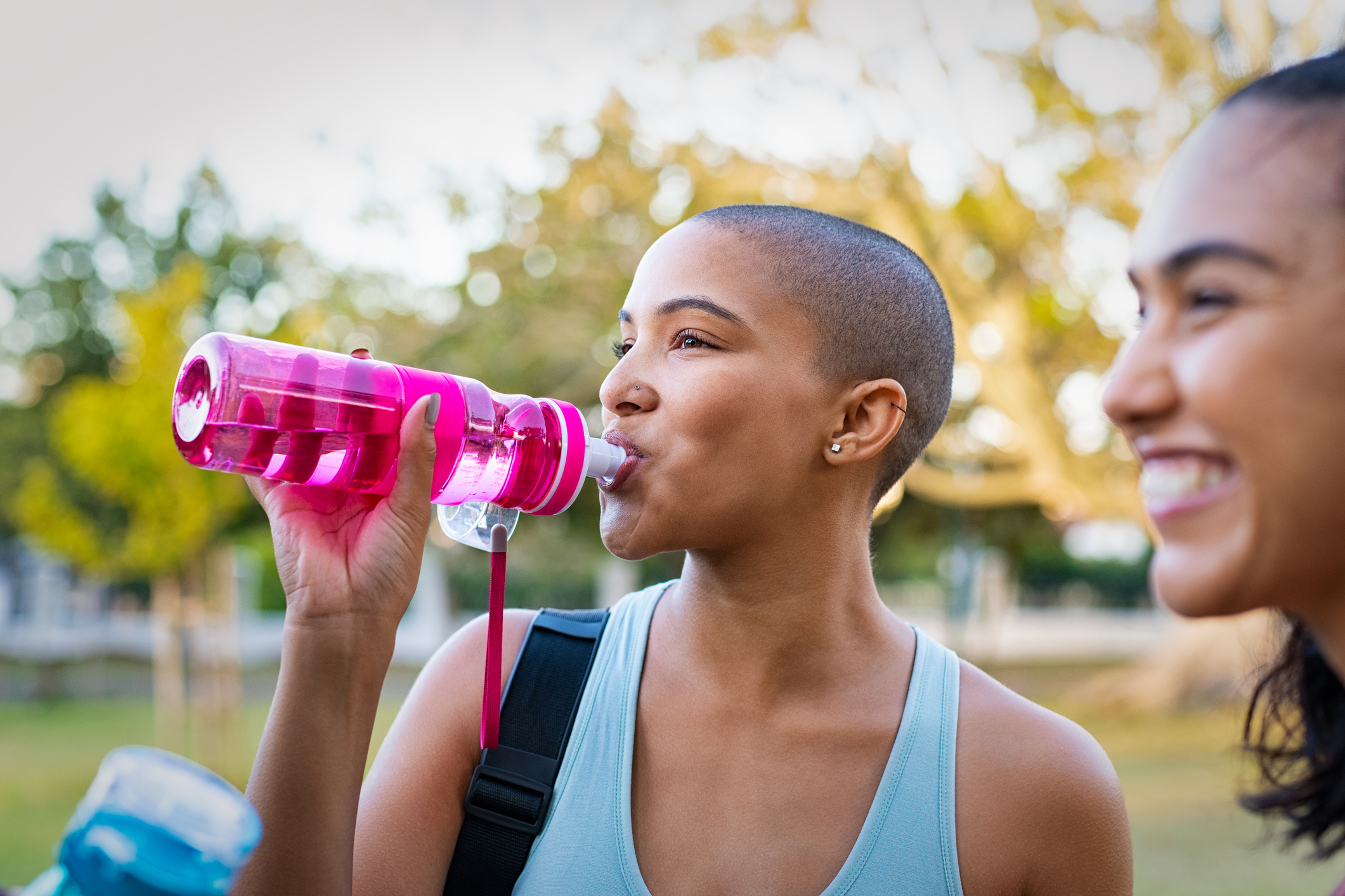Do you only drink water when you feel thirsty? That may not be enough. Dehydration may or may not show symptoms, especially if we are an older adult. Often once we feel thirsty we are already in a dehydrated state. Symptoms of dehydration can differ by age but commonly include thirst, less frequent and darker urination, fatigue, dizziness, and mild confusion. Infants and young children may be irritable or listless, have a dry mouth or tongue, and have sunken eyes and cheeks. It is important to remain hydrated with adequate fluid intake to ensure our bodies are working properly.
What can we do to avoid dehydration? Increasing fluid intake is the best advice to both prevent and reverse mild to moderate dehydration. It is easy to get busy and forget to drink, however having a refillable water bottle that’s always handy is a good way to ensure you’re getting enough water. You can take a drink between tasks or at other regular intervals, like commercial breaks or between calls while working. You will want to make sure you drink more water if you’re somewhere where it’s very hot or dry, or if you’re breastfeeding or doing a lot of physical activities.
To be healthy and maintain hydration, you should replenish what you lose. We lose water from common activities like breathing, talking, and moving. Perspiration, diarrhea, or vomiting is a heavy loss of water and salts which require replenishment. If you plan on high physical activity, especially in warm weather, be prepared to hydrate regularly with water and salts. The proper ratio of water and salts can be easily managed with powders available at your pharmacy, which are poured into a bottle of water. You can also purchase bottles of hydration water with the proper mix of water and salts, which is especially handy to have on hand. Your pharmacist can help you choose a product, whether it is to prepare for a hike or have it on hand for a sick family member. Remember, too much salt or sugar can also speed dehydration, so it is best to talk things over with your pharmacist if you are thinking of preparing your own hydration drink.
For normal activity, keeping hydrated with water and eating regularly will suffice. When being active, a sports electrolyte drink may be the best way to sustain your activity safely and comfortably, as some sugar is also required. Not too active, but concerned? Drinking coconut water, watermelon juice, dilute orange juice or skimmed milk are pretty great alternatives to just plain water. Is water enough? If you are active and aren’t able to replace the salts, sugars, protein, and fats lost during your activity, you should drink something to replenish those nutrients. Skimmed milk would be better than water to provide everything you need. When drinking juice, try watering it down by one-half – you will find it far more thirst-quenching and refreshing.
So how do you know if you are hydrating sufficiently? Your pee should be light coloured to almost clear, think the colour of lemonade to light beer. Certain foods, vitamins, medications, and medical conditions can change the colour of your urine. If you have questions regarding this ask your pharmacist. Added monitoring and precaution should be taken with infants, young children, the elderly, people with kidney disease, or on medications that increase urination (such as water pills).
If dehydration progresses to severe, seeking medical treatment is the best advice. Go to the hospital if there is a presence of fever, disorientation or confusion, difficulty sleeping, inability to keep down fluids, or stools that are dark or tarry. When in doubt, call for emergency medical assistance or advice.




